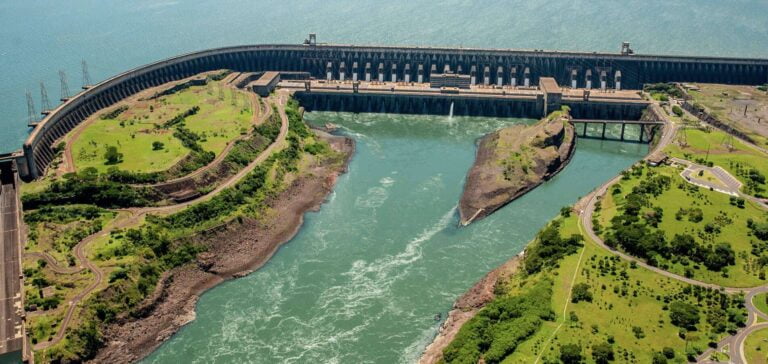In South America, the low flow of the Parana River is reducing electricity production from dams.
According to experts, this situation could last until at least 2022.
South America faces its lowest production levels since 2005
Electricity production at the Itaipu hydroelectric dam, one of the world’s largest, is 15% below 2020 levels.
That’s according to Hugo Zarate, director of operations at the dam on the border between Brazil and Paraguay.
The Itaipu power plant supplies 10% of Brazil’s electricity and 86% of Paraguay’s.
The hydroelectric plant is expected to produce between 65,000 and 67,000 GWh this year.
This is its lowest level since 2005, when the plant began operating at full capacity.
According to Zarate, the dam’s output “can meet demand”, but only “for short periods”.
The same applies to the Yacyreta dam, further downstream on the Parana River between Paraguay and Argentina.
In September, the plant only reached 50% of its normal monthly production.
The cause: low rainfall
South America is facing one of the worst droughts in a century, according to the Brazilian federal government.
The government has advised the population to reduce water and electricity consumption.
There has been talk of future electricity rationing.
The Parana river basin has seen its flow rate drop since 2019, due to insufficient rainfall.
The Itaipu dam normally benefits from an inflow of 11,000 m3 per second.
This flow is reduced to an average of 6,800 this year, according to Hugo Zarate.
In Yacyreta, an average of between 6,000 and 9,500 m3 per second is expected this year.
This compares with a normal flow of 14,500 m3, according to the plant’s hydrology manager, Lucas Chamorro.
The crisis is likely to last
Rainfall in Brazil will remain low for the rest of the year, according to Isaac Hankes, meteorological analyst for Refinitiv.
For dams with limited storage capacity, production depends entirely on river flow.
According to Hugo Zarate, if the flow does not increase, the energy crisis will continue.
In addition to electricity, the drought is reducing the royalties that South American states receive for exploiting their water resources.






















